A Boat out of Water
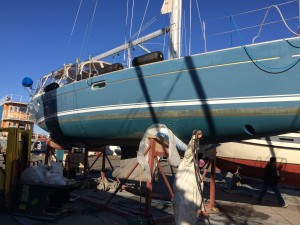
A couple of weeks ago I scheduled Mobert’s first haul-out since we took ownership. On Monday, November 10th, we took a little time during the middle of the work day to move her through the Lake Washington Ship Canal, under the four draw bridges (complete with dismayed drivers), to CSR Marine Seattle where the work will be done. It turned out to be a beautiful sunny day and it was sort of bitter-sweet that we were not going out sailing. This haul out is focused on addressing a few things we discovered during survey as well as some optimizations that will help improve our long-term cruising ability.

On the survey side, there were two major items we needed to address sooner than later. 1.) the propeller (a Max-Prop 3-blade feathering prop) has bends in at least 2 of the blades. This causes vibration and excessive wear. 2.) The keel (a cast-iron keel encased in epoxy) had some wear through the epoxy layer exposing the metal. This allows corrosion to form which is not good.
Our current home port (Downtown Kirkland on Lake Washington) happens to be in fresh water so any corrosion will be very slow but still something that we need to fix. Of the work we plan for this month, the keel work is the most involved. We need to refresh the anti-fouling paint on the bottom as well. Luckily, again, Mobert sits in fresh water most of the time right now so there’s really no growth happening on the bottom.
According to documentation on the boat, the engine and genset on Mobert were both serviced in 2012 but, aside from being two years ago, we just don’t know and can’t trust what has been done in the past. Best to have it all serviced and checked to create a sort of baseline from which we can maintain and monitor. Also, we do know that we had some fuel filter accumulation happening on the engine during our San Juan Island trip so Racor filter bowls need to be drained and elements replaced.
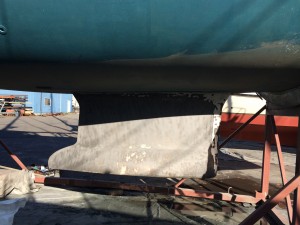
I went out to visit the boat on Friday to check on progress and the keel work was well underway. CSR Marine completed the engine and genset service while the boat was in the water, prior to hauling it out, and now she’s sitting on cradles in the yard. In comparison to the stands I’m used to sitting on when our old Cal 2-29 was hauled out in Everett, the cradles make the boat feel rock solid. I walked all over the deck and there was absolutely zero movement.
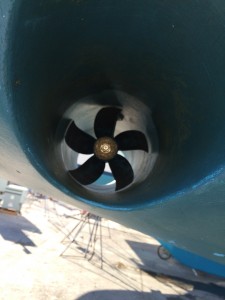
Frank from CSR had the yard remove the prop for me before I arrived so I could take it to be reconditioned, and while I was there I spent some time discussing some gelcoat and Awlgrip repairs I’m hoping they can help with. Everyone at CSR seems to be very professional and it feels nice to come away thinking they remember everything we discussed and will follow through. I’m sure I’ll pay for that one way or another later (probably financially) but for now I think it’s worth it.
As you can see in the pictures, the keel has been stripped already and they are getting started on fairing it, then recoating it. We have a nice little window of dry weather here in Seattle (albeit quite cold) and they are working to get it sealed before it starts to rain again.
Other work to be done while out of the water:
- Check the bow thruster propeller and replace the zinc
- Replace the zinc on the main prop shaft
- Replace the speed/temp transducer (the temp doesn’t work and I don’t trust the speed)
- Cut in a new through-hull and install a keel cooler for the fridge compressor. The freezer already has a keel cooler, but the fridge is air-cooled. Keel cooling is more efficient and will help with battery consumption when we are out cruising or at anchor.
- Clean up the Awlgrip paint with Awlcare
 After leaving the yard, I drove up to Lynnwood to PYI Inc, makers of the Max-Prop feathering propeller, to drop Mobert’s prop off for reconditioning. Clearly they know their own product quite well as even a 10 second glance at the parts yielded a pretty good indication of what work needed to be done. It’s nice to feel like people know what they are doing.
After leaving the yard, I drove up to Lynnwood to PYI Inc, makers of the Max-Prop feathering propeller, to drop Mobert’s prop off for reconditioning. Clearly they know their own product quite well as even a 10 second glance at the parts yielded a pretty good indication of what work needed to be done. It’s nice to feel like people know what they are doing.
Over the next week or so I’ll be checking in on the work progress.


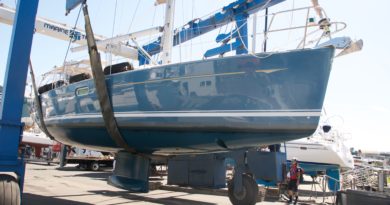

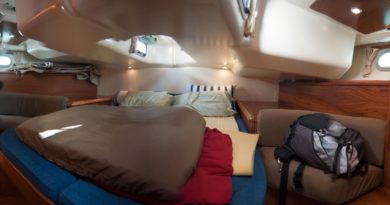
Pingback: Enhancing Energy Efficiency – Andersons Abroad